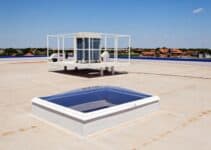We all have been using sun’s energy since years for numerous purposes but only recently we have started using the sun’s energy for generating power. About 70% of the light that hit the earth gets reflected back to space and only the remaining 30% light is enough to meet up our needs for years to come. So, solar energy is the energy that we get from the sun. We get enough energy from the sun that it could meet up our power demands, if only we could harness it properly. The energy that is absorbed by the earth is used for drying clothes, used by plants in the process of photosynthesis, taken in by the ocean where the heat creates wind and heat currents and for heating up homes.
How Solar Energy Works?
When we get the solar energy from the sun it gets trapped and stored and can be used in various ways to generate power. Solar energy can be used as direct or indirect, active or passive. Basically there are 2 ways in which we can harness sun’s energy:
1. Solar Thermal: Solar thermal is also known as solar water heating. In this process, solar energy is used directly to generate heat. Solar panels are used to trap the heat from the sun and are used to heat water in the glass panels. Glass panels are painted black so that they absorb maximum energy from the sun, then water is pumped through these pipes. These panels are positioned in such a way to maximize the absorption of heat throughout the day and can help in reducing the electricity bills.
2. Photoelectric Cells: This method converts the sun’s energy into electricity. Photovoltaic cells are most popular form of converting solar energy into electricity. These cells are silicon based pieces of materials that absorb the sun’s light. When the sunlight enters the cells, it causes the electrons to move. These electrons move in a certain direction which is known as current. This electricity is in the form of direct current.The electrical output from a single cell is small, therefore individual solar cells are arranged together in a PV module and the modules are grouped together to form an array. This power is then used to charge cells or inverters and this electricity can be used to provide sufficient power for common electrical appliances.
Solar energy is available throughout the world and in many parts of the world it is possible to capture that energy and use it to meet up our growing demands. The main benefit of solar energy is that it doesn’t cause any or little pollution, is a free energy source and is available in abundant quantity. If utilized to it’s full potential it can help us in overcome our dependence on fossil fuels and also can help us greatly in reducing the global warming.
References:
http://www.ucsusa.org/clean_energy/our-energy-choices/renewable-energy/how-solar-energy-works.html
http://www.scientificamerican.com/article.cfm?id=how-does-solar-power-work
http://www.treehugger.com/clean-technology/how-does-solar-energy-work.html





